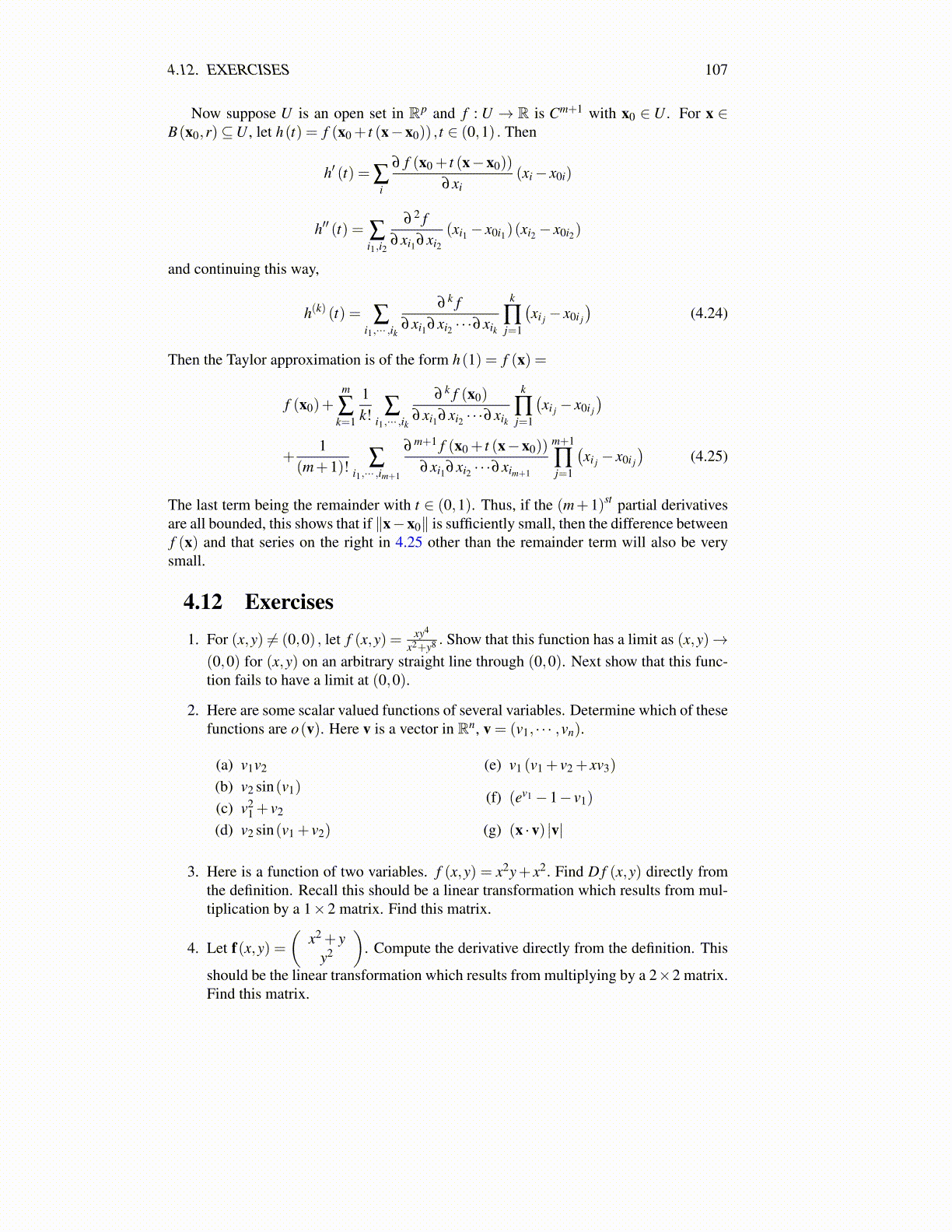
4.12. EXERCISES 107
Now suppose U is an open set in Rp and f : U → R is Cm+1 with x0 ∈ U . For x ∈B(x0,r)⊆U , let h(t) = f (x0 + t (x−x0)) , t ∈ (0,1) . Then
h′ (t) = ∑i
∂ f (x0 + t (x−x0))
∂xi(xi− x0i)
h′′ (t) = ∑i1,i2
∂ 2 f∂xi1∂xi2
(xi1 − x0i1)(xi2 − x0i2)
and continuing this way,
h(k) (t) = ∑i1,··· ,ik
∂ k f∂xi1∂xi2 · · ·∂xik
k
∏j=1
(xi j − x0i j
)(4.24)
Then the Taylor approximation is of the form h(1) = f (x) =
f (x0)+m
∑k=1
1k! ∑
i1,··· ,ik
∂ k f (x0)
∂xi1∂xi2 · · ·∂xik
k
∏j=1
(xi j − x0i j
)+
1(m+1)! ∑
i1,··· ,im+1
∂ m+1 f (x0 + t (x−x0))
∂xi1∂xi2 · · ·∂xim+1
m+1
∏j=1
(xi j − x0i j
)(4.25)
The last term being the remainder with t ∈ (0,1). Thus, if the (m+1)st partial derivativesare all bounded, this shows that if ∥x−x0∥ is sufficiently small, then the difference betweenf (x) and that series on the right in 4.25 other than the remainder term will also be verysmall.
4.12 Exercises1. For (x,y) ̸= (0,0) , let f (x,y) = xy4
x2+y8 . Show that this function has a limit as (x,y)→(0,0) for (x,y) on an arbitrary straight line through (0,0). Next show that this func-tion fails to have a limit at (0,0).
2. Here are some scalar valued functions of several variables. Determine which of thesefunctions are o(v). Here v is a vector in Rn, v = (v1, · · · ,vn).
(a) v1v2
(b) v2 sin(v1)
(c) v21 + v2
(d) v2 sin(v1 + v2)
(e) v1 (v1 + v2 + xv3)
(f) (ev1 −1− v1)
(g) (x ·v) |v|
3. Here is a function of two variables. f (x,y) = x2y+ x2. Find D f (x,y) directly fromthe definition. Recall this should be a linear transformation which results from mul-tiplication by a 1×2 matrix. Find this matrix.
4. Let f(x,y) =(
x2 + yy2
). Compute the derivative directly from the definition. This
should be the linear transformation which results from multiplying by a 2×2 matrix.Find this matrix.